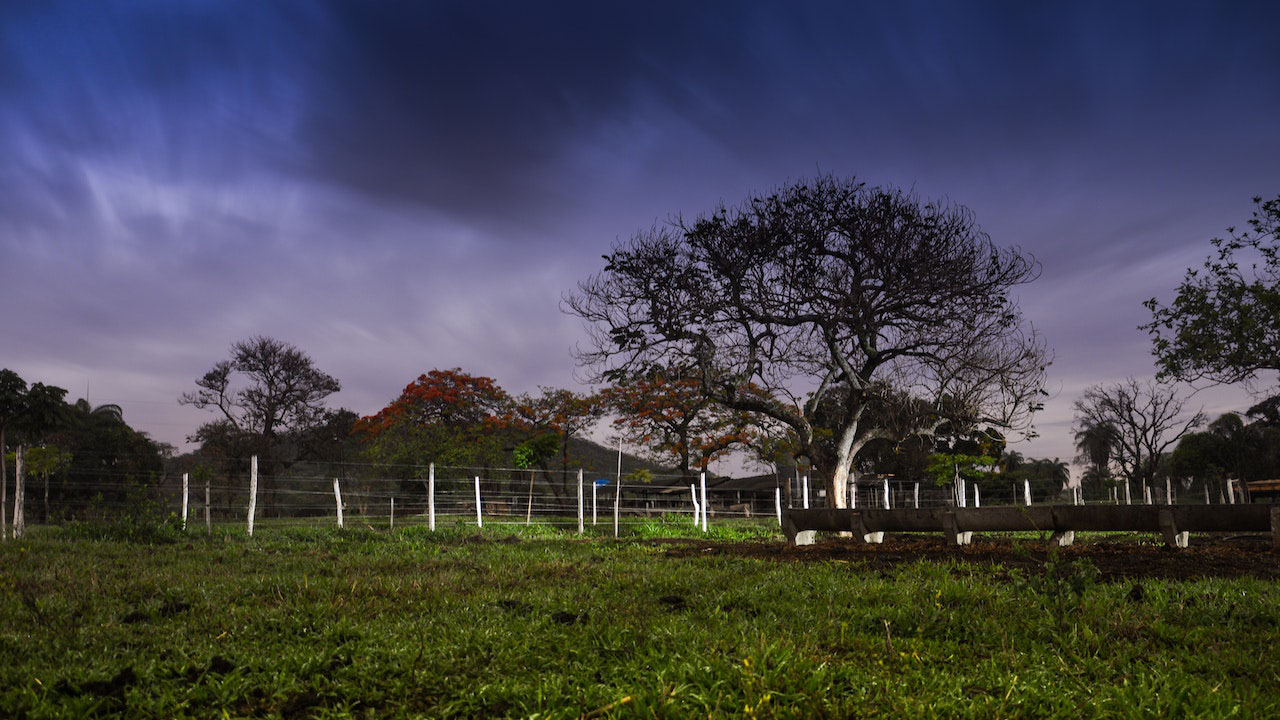From hurricanes to winter storms, severe weather can have a large impact on your trees. Severe weather storms can bring heavy wind, heavy rain, snow, ice and risk of lightning strikes to your home. It is important to know how these aspects of storms affect your trees short term and long term.
Tree Damage from Severe Storms
It is not always one bad storm that brings a tree down, but multiple severe storms creating damage over time that finally cause a tree to fall. There are a few different ways storms can damage the trees on your property including: branch failure, trunk failure, wind throw, crown twist and root failure.
Branch Failure
High wind or heavy loads from snow and ice can cause dead, twisted, cracked or hanging limbs to snap and break off. High wind can also cause healthy branches to crack. Lightning can also cause damage to branches and can be detrimental to trees. Some lightning strikes can cause enough damage to kill the tree altogether.
Trunk Failure
Tree trunks can snap and buckle under high wind forces. This type of damage usually cannot be repaired and increases the tree’s risk of falling in the next severe storm.
Wind Throw
Wind throw occurs when the entire tree is pushed over from high wind. This can be hazardous and life threatening depending on where the tree falls. Unhealthy trees with prior damage or diseases are more susceptible to wind throw, however even healthy trees can be knocked over by high winds.
Crown Twist
The crown of the tree is made up of leaves, twigs and branches and can sometimes be uneven. This unevenness can be caused by poor pruning or competition from surrounding trees. High winds blowing in on the uneven crown can produce a damaging twist to the branches and trunk. This twisting can also cause splitting and cracking.
Root Failure
Excessive rain from storms like hurricanes can cause the surrounding ground to become oversaturated. This soggy soil can cause roots to release their “grip”. When high winds are involved, these roots can also uproot, putting your tree at greater risk for falling with the next storm (if it managed to stay upright in the current one).
Tree Health & Risk Assessment
Knowing which trees are at risk during storms can also help you mitigate property damage and hazardous situations. There are a few things to look for when evaluating trees’ health and level of risk.
Damaged Roots
Roots play a large role in the health and stability of trees. Roots anchor and stabilize the tree within the soil, roots that have been damaged do not have as much “grip” to the soil to help keep the tree in place. Roots can be damaged by construction, disease, compaction and excessive rainfall.
Weak Points in Branches
Branches are attached to trunks in two different ways. They are either attached with a “U” shape or a “V” shape. Branches that are attached with a “U” shape are considered to have a strong attachment point. Branches that have a “V” shape attachment are considered to have a weak attachment point. As the branch and trunk grow they eventually start to push into each other, weakening this point even further.
Structural Damage
Pre-existing structural damage can make trees more susceptible to severe storm damage and risk of falling. Look out for vertical cracks, broken branches, cavities and girdling roots.
Heavy Canopies
Trees with thick heavy canopies catch high wind from storms putting pressure on its branches and its root system. Even a healthy tree can come down in a storm if the wind is high and enough pressure is exerted onto its branches or its root system.
Protect Your Trees & Property With Preventative Tree Care
It’s always a good idea to plan ahead and take preventative measures to protect your trees and your property before severe weather hits. At Blackhawk our ISA Certified Arborists can evaluate your property with a tree health & risk assessment that will give you peace of mind when the next severe storm blows in.

